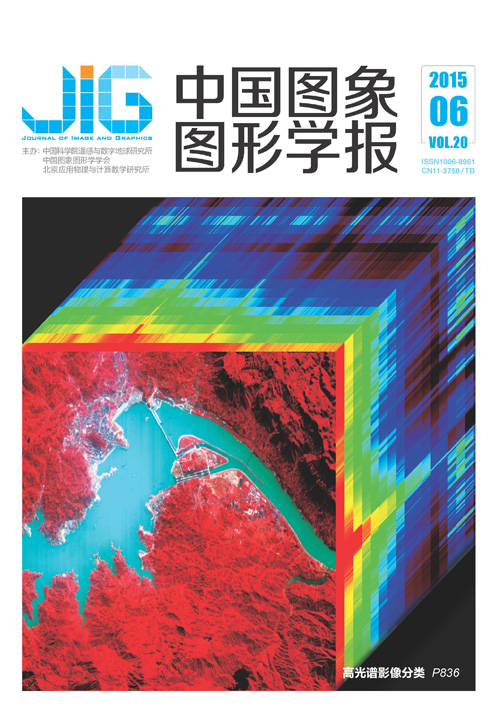
复杂场景下自适应背景减除算法
摘 要
目的 复杂场景下的背景减除是智能视频监控研究领域的研究重点和热点之一.针对混合高斯模型中高斯分布个数固定和参数初始化粗糙问题,提出一种应用于复杂场景中的基于混合高斯模型的自适应背景减除算法(AMGBS).方法 通过灰度值归类算法自适应调整模型的高斯分布个数,使得背景模型能够适应场景的变化,并且结合在线 K均值(online K-means)算法和在线期望最大化(online EM)算法初始化混合高斯模型参数.结果 针对灰度值统计结果调整高斯分布数,以及采用优化参数初始化过程,实验表明,本文方法的平均查准率和平均查全率比传统的混合高斯算法高出10%左右,比其他改进的混合高斯算法高出2%左右.结论 提出一种新的自适应背景减除算法,针对灰度值统计结果调整高斯分布数,以及采用优化参数初始化过程.实验结果表明,该方法对复杂场景有较强的适应能力,能够有效快速地完成背景减除,进而实现运动目标的提取.
关键词
Adaptive background subtraction approach of Gaussian mixture model
Shao Qike, Zhou Yu, Li Lu, Chen Qingzhang(College of Computer Science and Technology, Zhejiang University of Technology, Hangzhou 310023, China) Abstract
Objective Background subtraction is an important step in object detection for many computer vision applications, including intelligent surveillance and human detection. The purpose of this process is to segment moving objects from complex scenes. Performance mainly depends on the background modeling algorithm; however, the background is a complex environment that usually includes distracting motions. Thus, background subtraction is complicated, and an adaptive method is proposed to address this problem.Method The method is based on the Gaussian mixture model. In their approach, each pixel is modeled by a mixture of K Gaussian distributions. An online learning technique is employed to update background models. In their approach, online K-means is applied to initialize the parameters of the Gaussian mixture model. The number of Gaussian distributions cannot be changed in the process of detection. The initialization of the model parameters significantly influences foreground detection, and the fixed Gaussian distribution cannot accommodate the changing background. In this study, we initialize the parameters of the Gaussian mixture model by combining the online K-means and the online expectation-maximization (EM) algorithms. The outcome of online K-means algorithm is the input of the online EM algorithm. The former rapidly generates the parameter values that are close to the reasonable value, whereas the online EM rapidly and accurately astringes the result that is obtained through online K-means to a reasonable range. In addition, this paper also presents a gray-value classification algorithm to adjust the number of Gaussians to adapt to the dynamic environment. Recent statistics regarding gray value are obtained for each pixel. Then, this algorithm classifies these gray values into different categories. Finally, this method updates the number of Gaussian distributions on the basis of the number of categories. In this paper, we conduct several experiments with four video datasets to evaluate the proposed background subtraction algorithm. Three of these datasets are standard test videos that are widely used in the video monitoring field. The videos entitled “Waving Trees” and “Bootstrapping” are derived from the Wallflower dataset. The pedestrian video is selected from the Change detection dataset. Another video is captured by a local bus station downtown. Moreover, a quantitative analysis is conducted with the general evaluation criteria of Precision and Recall.Result In the conventional Gaussian mixture model, the number of Gaussian distributions is fixed for each pixel and the system cannot adjust to the changing background. Some static regions apply only one or two Gaussian distributions, whereas moving regions need more Gaussian distributions to maintain the model. However, maintaining additional distributions consumes resources, whereas a lack of distributions may result in false detections.Conclusion Test results show that the proposed method performs better than the conventional Gaussian mixture model. Experimental findings also suggest that the proposed approach adapts more effectively to complex scenes than those presented in reviewed literature. The background can be segmented effectively and rapidly, and the results for Precision-to-Recall ratio demonstrate the superiority of the method to analogous algorithms. The proposed approach provides a new direction for research on background subtraction. In future work, we will attempt to control learning rate with effective strategies and improve Precision-to-Recall ratio.
Keywords
|



 中国图象图形学报 │ 京ICP备05080539号-4 │ 本系统由
中国图象图形学报 │ 京ICP备05080539号-4 │ 本系统由